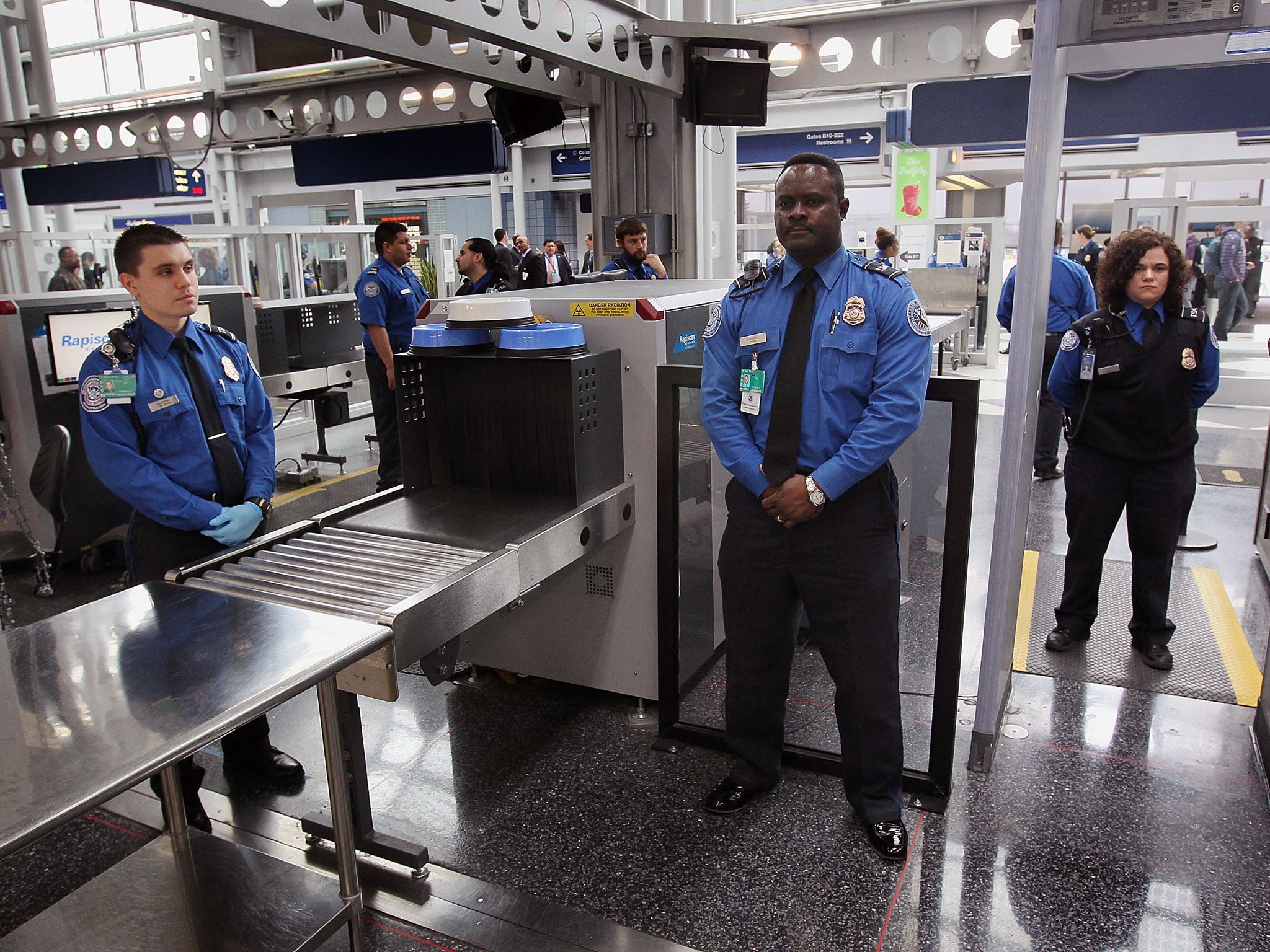Leaked US security documents reveal how to spot a terrorist trying to board a plane
But checklist is ridiculed as bad news for 'most teenage boys' as sweating, yawning and pale complexion included as warning signs

The US airport security agency is facing ridicule after leaked documents revealed its checklist of tell-tale signs that a passenger might be a potential terrorist.
Despite its own report finding that the human ability to identify deceptive behaviour through body language is no better than chance, the US government has spent almost $1 billion on a programme deploying Behaviour Detection Officers to airport security.
The specialised agents of the Transportation Security Administration (TSA) are taught to evaluate passengers based on a checklist known as the “Screening of Passengers by Observation Techniques” (SPOT).
But according to a copy of a SPOT report published by The Intercept, the “stress factors” that could see passengers stopped at security include arriving late for your flight, blinking too much, sweating and “excessive yawning”.
In a statement to The Intercept, the TSA refused to comment on specific SPOT factors in the leaked document but sought to downplay the significance of the programme as a whole.
It said: “Behavior detection, which is just one element of the TSA’s efforts to mitigate threats against the traveling public, is vital to TSA’s layered approach to deter, detect and disrupt individuals who pose a threat to aviation.”
At the end of 2013, the US Government Accountability Office (GAO) said the TSA had spent about $900 million to date deploying SPOT “without validating its scientific basis [or providing] performance measures”.
The GAO analysed over 400 scientific studies over six decades and found that “the human ability to accurately identify deceptive behaviour based on behavioural indicators is the same as or slightly better than chance”.
It said that 21 of 25 specialist officers interviewed admitted that at least some of the markers were subjective, and recommended the TSA should limit future funding to the programme.
And the leaked guidelines were no better received among the public this week – with one Twitter warning “watch out most teenage boys”.
How to SPOT a terrorist, according to US security:
Assign 1 point per “stress” factor, 2 points per “fear” factor and 3 points per “deception factor”. If the passenger scores 0-3 points, let them pass. If they score 4 or 5, refer for “selective screening”. If they score 6 or more, refer and notify a Law Enforcement Officer (LEO)
Stress factors (17):
- Arrives late for flight, if known
- Avoids eye contact with security personnel or LEO
- Exaggerated yawning as the individual approaches the screening process
- Excessive fidgeting, clock watching, head-turning, shuffling feet, leg shaking
- Excessive perspiration inconsistent with the environment
- Face pale from recent shaving of beard
- Facial flushing while undergoing screening
- Faster eye blink rate when individual requested to submit to screening procedures
- Increased breathing rate, panting
- Obvious “Adam’s Apple” jump when requested to submit to screening procedures
- Protruding or beating neck arteries
- Repetitive touching of face
- Rubbing or wringing of hands
- Strong body odour
- Sweaty palms
- Trembling
- Whistling as the individual approaches the screening process
Fear factors (15):
- Bag appears to be heavier than expected or does not suit the individual’s appearance
- Bulges in clothing
- Cold penetrating stare
- Constantly looking at other travellers or associates
- Exaggerated emotions or inappropriate behaviours to the location such as crying, excessive laughter or chatter
- Exaggerated, repetitive grooming gestures
- Hesitation/indecision on entering checkpoint or submitting to screening process
- Individuals who are seemingly unrelated but display identical dress or luggage
- Powerful grip of a bag or hand inside the bag
- Rigid posture, minimal body movements with arms close to side
- Scans area, appearing to look for security personnel or LEO
- Shows unusual interest in security officers and their work routine
- Displays arrogance and verbally expresses contempt for the screening process
- Wearing improper attire for location
- Widely open staring eyes
Deception factors (6):
- Appears to be confused or disoriented
- Appears to be in disguise
- Asks the Behaviour Detection Officer security-related questions
- Does not respond to authoritative commands
- Maintains covert ties with others (maintaining consistent eye contact with others, exhibiting hand gestures to others or passing objects to others)
- Repeatedly pats upper body with hands (not associated with divesting objects at X-ray/Metal Detector).
Join our commenting forum
Join thought-provoking conversations, follow other Independent readers and see their replies
Comments